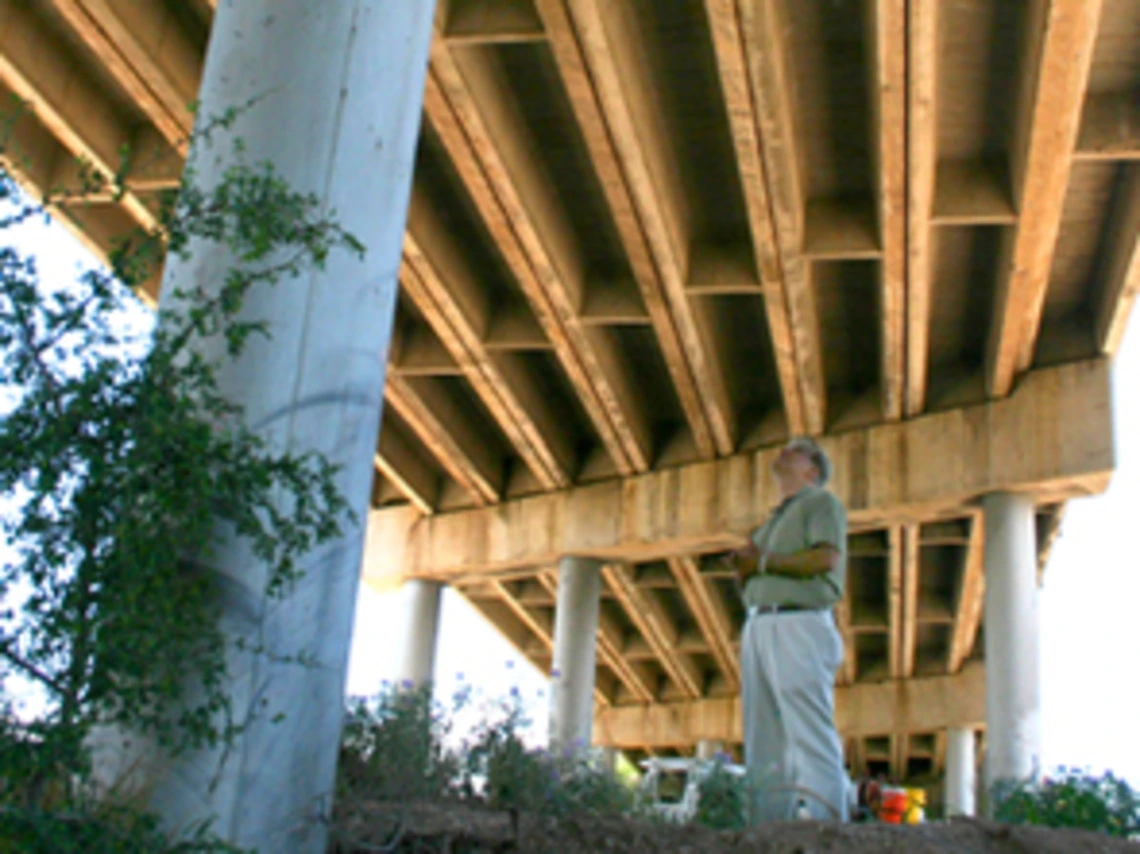UA Prof Has Low-Cost, High-Tech Way to Strengthen Deteriorating Bridges

Article taken from the University of Arizona website and may be found here.
A University of Arizona engineering professor has developed an easy, low-cost way to strengthen thousands of aging steel and concrete bridges across the country.
The technology could have prevented Minnesota's IH-35W bridge collapse and could be used to repair tens of thousands of substandard bridges, says Professor Hamid Saadatmanesh, of UA's Civil Engineering and Engineering Mechanics Department.
The American Society of Civil Engineers (ASCE) reports that 27.1 percent of the nation's bridges are structurally deficient or functionally obsolete.
Saadatmensh's process could bring the structurally deficient bridges up to better-than-original specifications and could strengthen some obsolete bridges so they could exceed their original specifications and carry more traffic.
Saadatmanesh has spent six years developing and testing the technology. A paper he wrote on the process was named the best paper in 2001 for the ASCE journal of Composites in Construction.
Simple and Fast
The process is simple and fast. The bridge girder to be repaired or strengthened is first cleaned. If it's a concrete girder with rebar weakened by corrosion, the girder is wrapped on three sides with a carbon-fiber mesh that is similar in appearance to fiberglass cloth, but structurally much stronger. This carbon-fiber material is simply glued to the girder using a special epoxy.
In the case of a steel girder, the cloth can be glued across a crack, overlapping as little a six inches. If an entire girder needs to be strengthened to carry a heavier load, the cloth is glued along one side of the girder.
While the carbon fiber is much more expensive pound-for-pound than steel, the entire process is much cheaper than welding or bolting a steel plate across a crack, Saadatmanesh said. "You have to consider the entire cost," he noted. Steel plates would have to be moved and positioned with a crane, and welding them on or drilling holes and bolting them to the girder would be time consuming.
"You don't have to drill holes," Saadatmanesh said. "You don't have to weld, and you don't need a crane. Instead of taking eight hours, you can do this in half an hour."
In addition, if steel is welded or bolted to a bridge, it significantly increases the weight, reducing the load carrying capacity "When you drill holes, you also make the bridge weaker because these holes act as spots where forces concentrate," he said. "All those problems are avoided by gluing on carbon fiber."
Carbon Fiber Resists Corrosion, Fatigue
Carbon fiber also will not deteriorate like steel. Carbon fiber is used extensively in airplanes partially because its fatigue strength far exceeds that of steel, Saadatmanesh said. "It can bend almost an infinite number of times."
It's also highly corrosion resistant. Saadatmanesh left a piece of carbon fiber material in an acid bath with a pH of 2.5 for 20,000 hours, and it was as strong when it came out as when it went in. "Steel in the same solution would melt in a few hours," he said.
Saadatmanesh has formed a company, CarbonWrap Solutions LLC, and hopes that departments of transportation across the country will start using his method for repairing and retrofitting bridges.
"This is a real example of tech transfer from a university," he said. "The taxpayers ask, 'Where does the research money go?'" I developed this through a National Science Foundation grant and now it's available to greatly benefit the public by making bridges stronger and safer."
